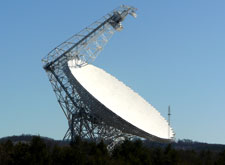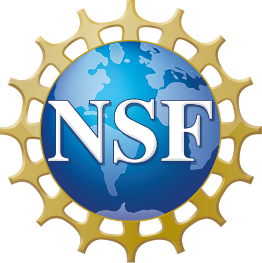- Related Links
- GBT 4mm Receiver Project Book Reference material for the project --- provides technical information and science case
- GBT 4mm Rx Wiki Page Development status/summary with ongoing discussion notes and meetings
- GBT W-FPA Web Page Web page for the GBT W-FPA program
- GBT W-band FPA Wiki Page Provides status and links to the W-FPA program including overlapping science cases for the 4mm band.
Background Info
Green Bank Telescope 4mm Receiver
Introduction
NRAO has built a 4mm dual-beam receiver to cover the low-frequency end of the 3mm atmospheric window from 67-93 GHz. The amplifiers were updated in fall of 2012 which has provided better performance.
Observing Information
- (GBT Observer's Guide for 4mm Rx, Oct. 2014 [pdf])
- (How to Observe at 4mm, Oct. 2014 [pdf])
- (Instrument Status -- latest user information and technical performance details)
Proposal Information
Specification Summary
- Tunable frequency range: 67-93GHz
- Polarization: Dual linear with selection of circular using a 1/4 wave plate for VLB observations
- Number of beams: Two beams with dual polarization.
- Beam separation: 4.7 arc-minutes in the Az direction.
Key Science
Based on the ASTRO-2010 Decadale Survey, four key research areas have been identified for the GBT. The 4mm receiver would greatly enhance the science capabilities in all of these areas.
- Fundamental Physics -- With the VLBA, the GBT 4mm receiver would allow us to probe the fundamental physics near the base of powerful black hole jets in nearby galaxies.
- The Context of Star Formation -- Molecular spectroscopy of the deuterium species and the other important transitions associated with dense molecular gas with the GBT 4mm receiver would revolutionize studies of the structure and physical properties of cold cloud cores from which stars form.
- Origin of Life -- The GBT 4mm receiver will carry out molecular spectroscopy of complex organic molecules and pre-biotic molecules in the ISM and comets which are key for studying the conditions from which life eventually forms.
- Galaxies Across Cosmic Time -- The GBT 4mm receiver would permit the studies of CO(1-0) at intermediate redshifts where the evolution of galaxies is proceeding rapidly and allow for the studies of the dense gas tracers, such as HCN and HCO+, in local star-forming galaxies.
Technical Information
See the 4mm Receiver Project Book for technical details and science case: GBT 4mm Receiver Project Book.See Photo Archive for images of the 4mm Receiver.



